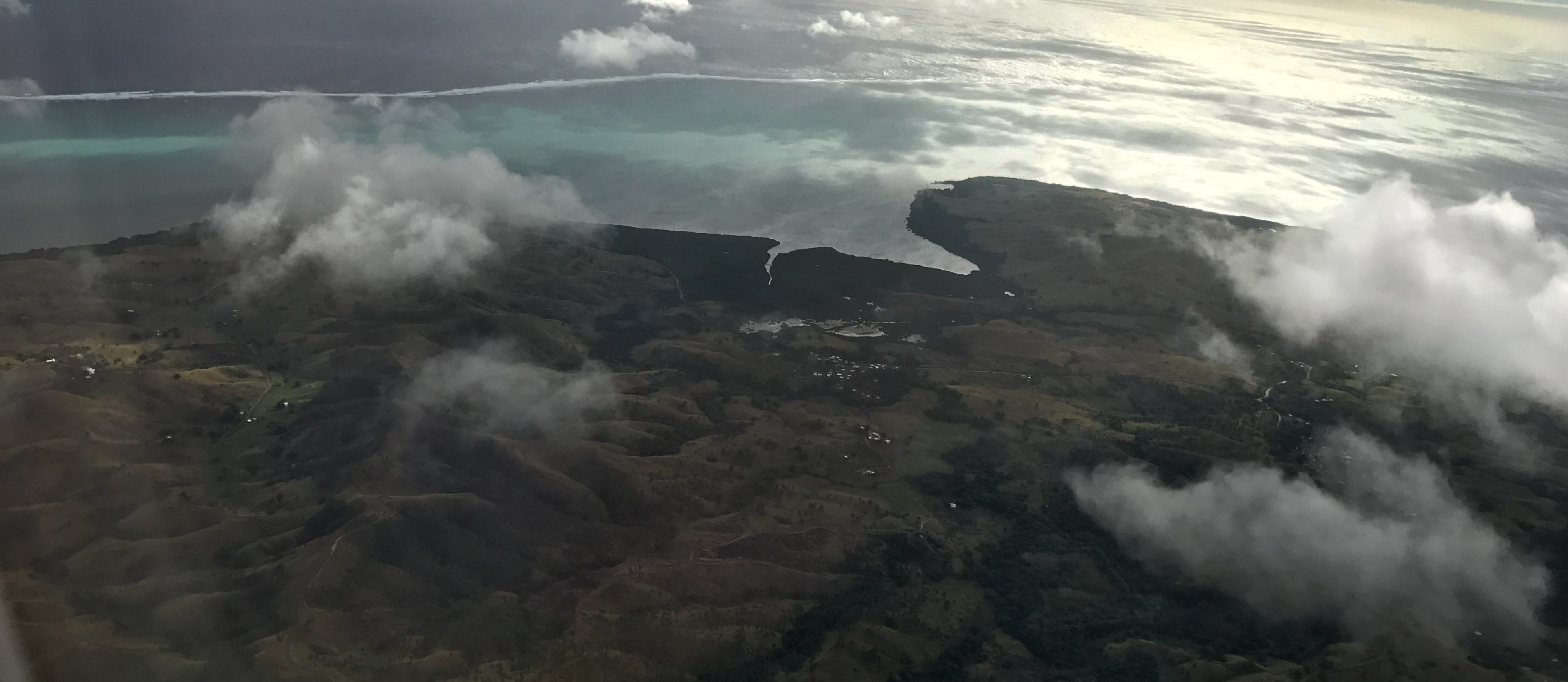 A high degree of economic concentration, vulnerability to natural and climate-related disasters, and dependency on global trade makes growth in small states more volatile than in other EMDEs. Photo: Karolina Ordon / World Bank
A high degree of economic concentration, vulnerability to natural and climate-related disasters, and dependency on global trade makes growth in small states more volatile than in other EMDEs. Photo: Karolina Ordon / World Bank
Small states—countries with a population of 1.5 million or less—suffered severe economic repercussions from the COVID-19 pandemic. Accelerating growth while building resilience to future shocks will require extensive domestic efforts supported by the global community. This includes advancing economic diversification, improving digital and physical connectivity, enhancing disaster risk management, lessening dependence on imported fossil fuels, reducing trade costs, and collaborating across borders to achieve economies of scale.
1. Small states were hit hard by the pandemic and face a slow recovery
After output shrank in small states by more than 11 percent in 2020, seven times as much as in other EMDEs, the recovery has been slow, held back by spillovers from the Russian Federation’s invasion of Ukraine and synchronized global monetary policy tightening. At the projected pace of growth, aggregate output in small states will regain its 2019 level only this year, while other EMDEs exceeded this threshold in 2021.
Chart 1: GDP compared to pre-pandemic levels
Source: World Bank.
Note: EMDEs = emerging market and developing economies. Growth rates are calculated using GDP weights at average 2010-19 prices and market exchange rates. Sample includes 34 EMDE small states, 115 EMDEs excluding small states, and 37 advanced economies. Guyana is excluded.
2. Small states are highly economically concentrated, often in tourism
Many small state economies are highly concentrated in one or two sectors, most commonly tourism. Tourism expenditures were equivalent to an average of 18 percent of GDP in small states prior to the pandemic, and as high as about 50 percent in some countries. As a result, the unprecedented collapse of global travel during the pandemic had a disproportionate impact on small states.
Chart 2: Tourist arrivals
Sources: Haver Analytics; national statistical agencies; UN World Tourism Organization; World Bank.
Note: Total non-seasonally adjusted visitor arrivals to each country group. Caribbean includes Antigua and Barbuda, The Bahamas, Barbados, Belize, Dominica, Grenada, St. Kitts and Nevis, St. Lucia, and St. Vincent and the Grenadines. Indian Ocean islands include Maldives, Mauritius, and the Seychelles. Pacific Ocean islands include Fiji and Palau. Last observation is March 2022 for the Caribbean, September 2022 for Pacific Ocean islands and the world, and October 2022 for Indian Ocean islands.
3. Small states depend heavily on imported food and fuel
The recovery in small states has been delayed in part by elevated energy and food prices. Typically, food and fuel imports are equivalent to about one-sixth of GDP in small states, substantially more than in other EMDEs. Steep rises in food prices brought on by war-related disruptions to grain, energy, and fertilizer markets have worsened terms of trade, increased inflation, and squeezed living standards.
Chart 3: Food and fuel imports
Sources: UN Comtrade; World Bank.
Note: EMDEs = emerging market and developing economies. Bars show simple averages. Data for 2019. Food imports sample includes 22 EMDE small states and 95 EMDEs excluding small states. Fuel imports sample includes 18 EMDE small states and 78 EMDEs excluding small states. Energy exporting EMDEs were dropped from the fuel imports sample.
4. Small states are highly vulnerable to climate change
The frequency of weather-related natural disasters in small states has increased in recent decades, and some countries face existential threats from rising sea levels and coastal erosion. Disaster-related damages and losses in small states have been equivalent to nearly 5 percent of GDP per year since 1990, about 15 times the damages suffered by other EMDEs. In extreme cases, such as Hurricane Maria in 2017 in Dominica and Hurricane Ivan in Grenada in 2004, damages from a single disaster have amounted to multiples of a country’s GDP.
Chart 4: Damages and losses from natural disasters, 1990-2021
Sources: EM-DAT; World Bank.
Note: EMDEs = emerging market and developing economies. Bars show the sum of damages in each group of countries in each year divided by the sum of nominal GDP in each group of countries, weighted by country-level nominal GDP.
5. Activity in small states is volatile
A high degree of economic concentration, vulnerability to natural and climate-related disasters, and dependency on global trade makes growth in small states more volatile than in other EMDEs. At the same time, growth in small states is challenged by limited capacity and, especially for countries in East Asia and Pacific and Sub-Saharan Africa, lack of connectivity.

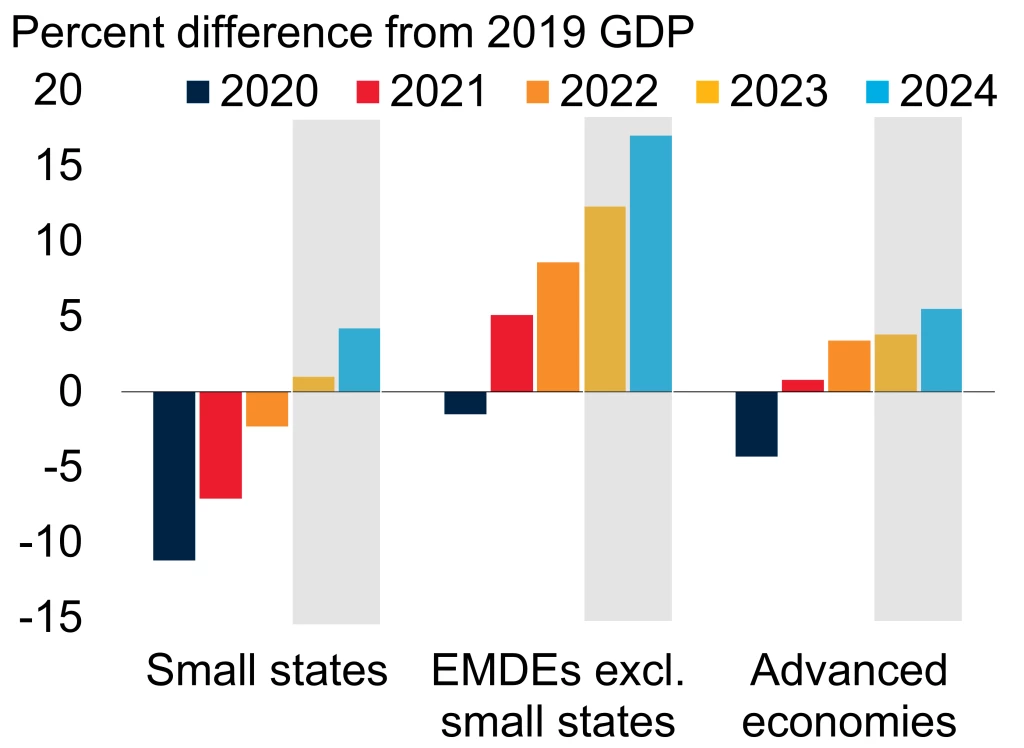
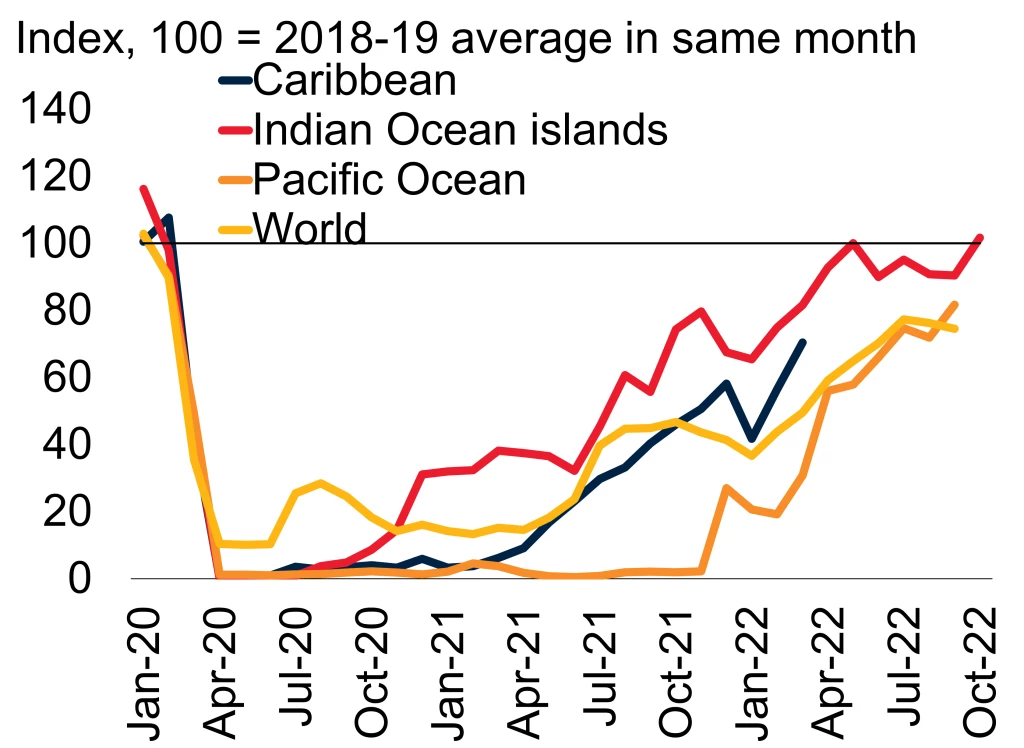
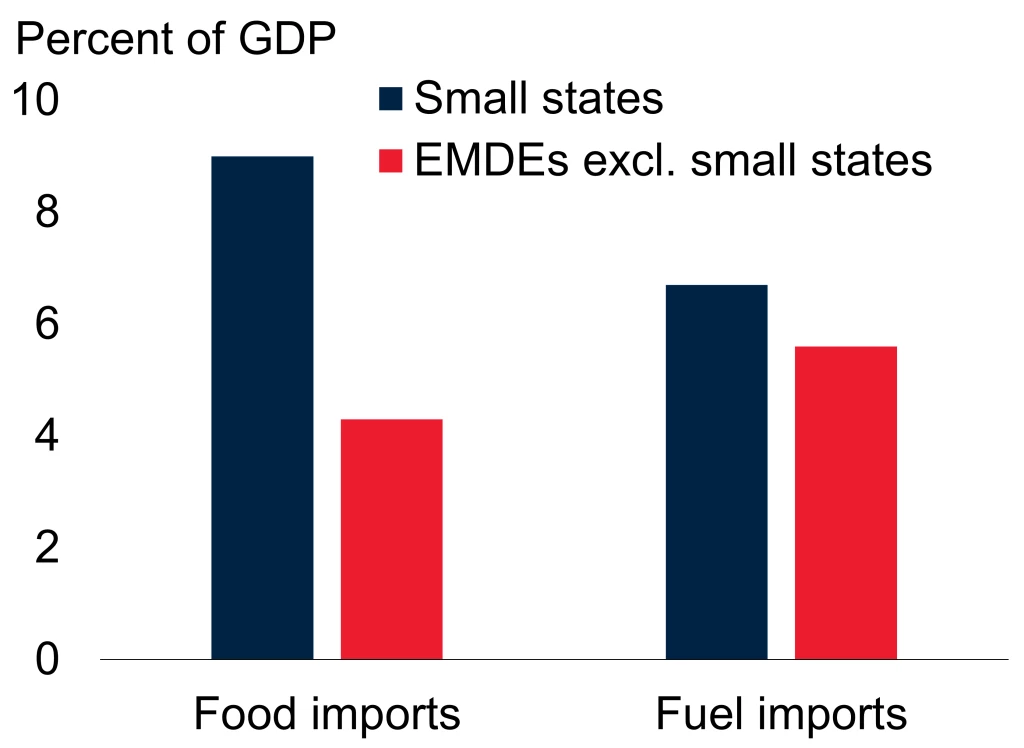
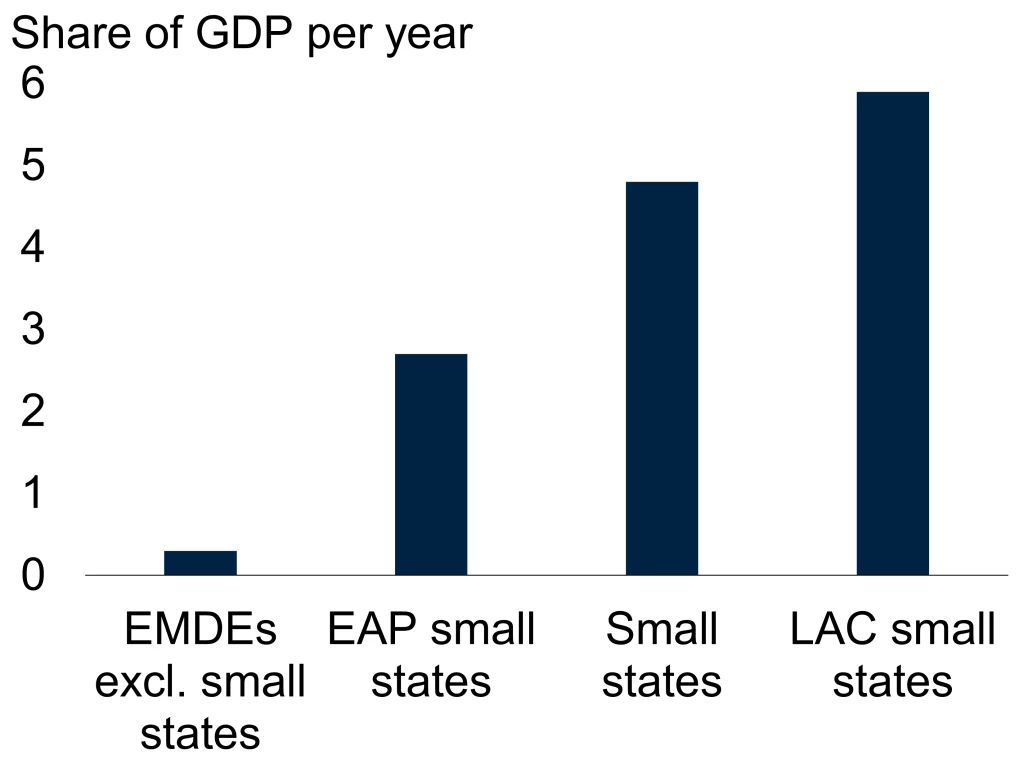
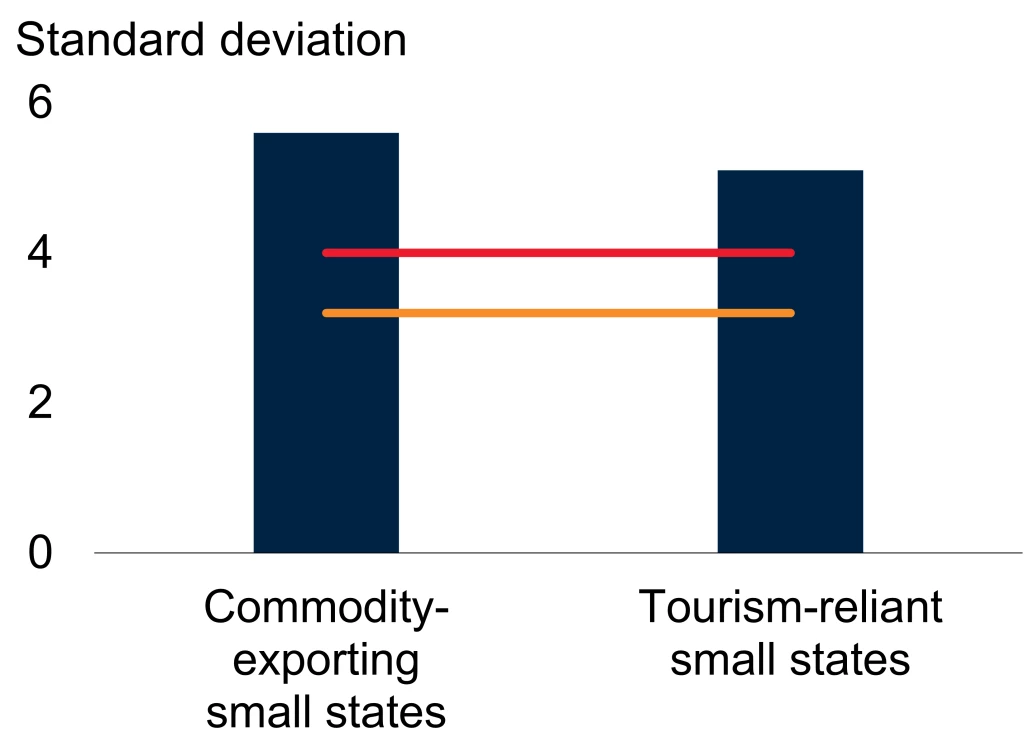



Join the Conversation